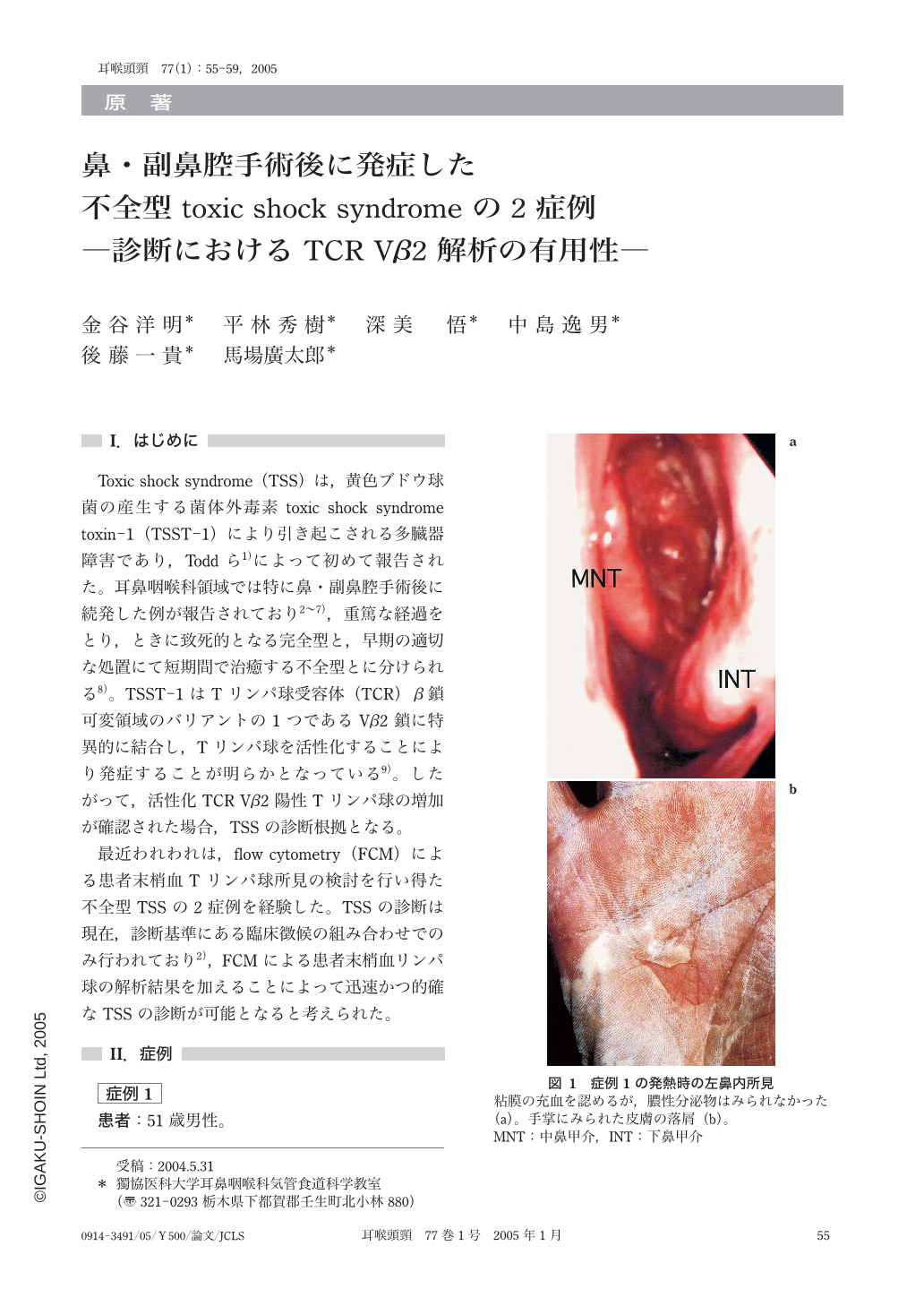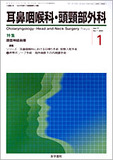Japanese
English
- 有料閲覧
- Abstract 文献概要
- 1ページ目 Look Inside
I.はじめに
Toxic shock syndrome(TSS)は,黄色ブドウ球菌の産生する菌体外毒素toxic shock syndrome toxin-1(TSST-1)により引き起こされる多臓器障害であり,Toddら1)によって初めて報告された。耳鼻咽喉科領域では特に鼻・副鼻腔手術後に続発した例が報告されており2~7),重篤な経過をとり,ときに致死的となる完全型と,早期の適切な処置にて短期間で治癒する不全型とに分けられる8)。TSST-1はTリンパ球受容体(TCR)β鎖可変領域のバリアントの1つであるVβ2鎖に特異的に結合し,Tリンパ球を活性化することにより発症することが明らかとなっている9)。したがって,活性化TCR Vβ2陽性Tリンパ球の増加が確認された場合,TSSの診断根拠となる。
最近われわれは,flow cytometry(FCM)による患者末梢血Tリンパ球所見の検討を行い得た不全型TSSの2症例を経験した。TSSの診断は現在,診断基準にある臨床徴候の組み合わせでのみ行われており2),FCMによる患者末梢血リンパ球の解析結果を加えることによって迅速かつ的確なTSSの診断が可能となると考えられた。
We reported two cases of toxic shock syndrome(TSS)after nasal surgery. These cases presented with sudden onset of high fever and a variety of other symptoms. Nasal cultures revealed MRSA with TSST-1 production. TSS was diagnosed as combination of clinical symptoms and laboratory examinations. For early diagnosis,we estimated flow cytometric analysis of patient's peripheral lymphocytes,and marked proliferation of activated T cell receptor Vβ2 positive cells were observed. We considered that flow cytometric analysis was useful for early diagnostic method of TSS.

Copyright © 2005, Igaku-Shoin Ltd. All rights reserved.


